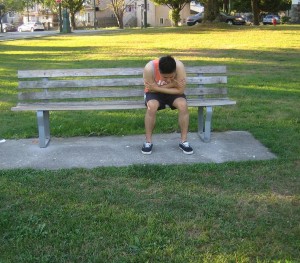Cervical spondylosis is also called neck arthritis and cervical osteoarthritis. It is an age-related condition affecting the joints in the neck. It happens due to the wearing and tearing of the cartilage, bones and tissue of the cervical spine.
Causes of cervical spondylosis
- Overgrowths of bones or bone spurs to make the spine stronger but they can press the delicate parts of spine such as the nerves and the spinal cord
- The disc found between the spinal bones which are thick, pad that looks like a cushion that absorb the shock such as twisting, lifting and other activities becomes dry overtime.
- Development of cracks on the spinal disc and cause leakage of the internal cushioning material and press on the nerves and the spinal cord
- Injury to the neck such as vehicular accidents or falls.

Severe pain when sneezing, sitting, standing, coughing and tilting the neck backward. - The ligament that attaches the spinal bones becomes stiff overtime and affects movements of the neck.
- Performing repetitive movements or heavy lifting puts excessive pressure on the spine and cause early wear and tear.
- Improper posture while walking or sitting
- Over weight
- Smoking
- Sedentary lifestyle
- Genetic factors
Symptoms
- Severe pain when sneezing, sitting, standing, coughing and tilting the neck backward.
- Weakness of the muscle
- Headaches at the back of the head
- Stiff neck that becomes worse
- Tingling or numbness on the shoulders and arms
- Loss of balance and loss of bowel or bladder control needs immediate attention.
Treatment
- Apply hot and cold compress on the affected area. Apply hot compress by wrapping a hot water bag using a towel and place on the area for at least 2-3 minutes and then follow it up with a cold compress by placing few ice cubes in a plastic bag, wrapped with a towel before placing to the area for about 1 minute. Repeat this process for 15-20 minutes every day until symptoms subsides. Heat relaxes the muscles and for proper flow of blood in the area and cold lessens the swelling and the inflammation. Avoid heat if the area is irritated and red and cold if having circulatory problems.
- Perform gentle exercises with the help of the physical therapist to lessen the stiffness and the pain around the neck. Simple exercises such as rotating the head both clockwise and counterclockwise direction for at least 10 minutes 2-3 times every day to lessen the pain in the affected area. Low-impact aerobic exercises such as brisk walking for 30 minutes 5 times a week and swimming. Cycling is also good for the condition, and keeps the back straight while cycling.
- Take the prescribed over-the counter medications such as ibuprofen acetaminophen and naproxen to lessen the pain and the inflammations.
- Wear the prescribed soft neck brace or collar to lessen the pain and support the affected area. Avoid wearing it for prolonged periods of time to prevent muscle weakness.
